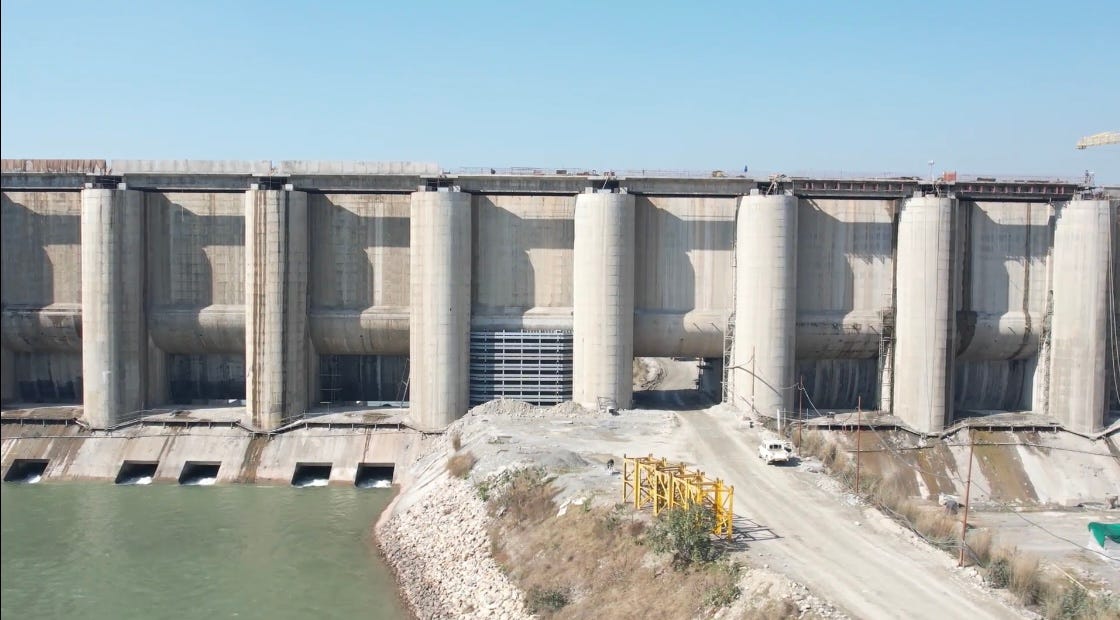Revisiting the Indus Waters Treaty: India’s Notice to Pakistan and Its Implications
Minimal Benefits for Punjab, Limited Gains for J&K Due to Topographical Constraints; Central PSUs Stand to Benefit the Most.
India’s Notice to Pakistan to Review the Indus Waters Treaty
In a significant diplomatic-cum-political move, India recently has served a formal notice to Pakistan to review and modify the Indus Waters Treaty (IWT) of 1960. The notice, issued in August 2024, is not intended to terminate the treaty but aims to readdress its provisions to reflect evolving circumstances, including demographic shifts, environmental concerns, and energy needs. The request for revision comes amidst persistent disputes over hydroelectric projects and concerns about cross-border terrorism. India's decision to invoke Article XII(3) of the treaty marks a crucial juncture in Indo-Pak relations and raises questions about future water-sharing dynamics in the region.
Background and Salient Features of the Indus Waters Treaty
The Indus Waters Treaty was signed in 1960 after extensive negotiations mediated by the World Bank. The Treaty divides the waters of the Indus river system, comprising six rivers, between India and Pakistan. The three eastern rivers (Ravi, Beas, Sutlej) were allocated to India, while the three western rivers (Indus, Jhelum, Chenab) were reserved for Pakistan. Despite several conflicts between the two nations, the treaty has been largely respected and is seen as a model of water diplomacy.
Key Features of the Treaty:
Water Allocation: India can fully use the waters of the eastern rivers for irrigation, drinking water, and power generation, while Pakistan enjoys similar rights over the western rivers.
Limited Use by India: India is permitted limited usage of the western rivers for non-consumptive purposes, including hydroelectric projects, but with restrictions.
Dispute Resolution Mechanism: The treaty provides for a Permanent Indus Commission and sets up mechanisms for resolving differences and disputes, including referring cases to a neutral expert or a Court of Arbitration.
Minimal Benefits for Punjab, Potential Gains for J&K
While the revision of the Indus Waters Treaty may bring potential gains to the Union Territory of Jammu and Kashmir (J&K), the benefits for Punjab remain minimal. Punjab and J&K already exercise their full rights over the Ravi River, and further modifications to the treaty are unlikely to enhance water availability for the state. On the other hand, J&K could gain from improved water management and hydroelectric projects under Central Public Sector Undertakings (PSUs), given its limited ability to expand irrigated land due to its mountainous terrain. Any future revision must consider these regional disparities and their economic as well as ecological implications.
The Shahpur Kandi Dam Project: A Critical Imperative
One of the most critical projects demanding swift commissioning is the Shahpur Kandi Dam on the Ravi River, now approaching completion. This dam is pivotal in fully utilising India’s share of the Ravi waters under the Indus Waters Treaty. The project, delayed for years primarily due to frivolous objections from Jammu & Kashmir and the stalling of work within their territorial jurisdiction, is poised to deliver substantial irrigation benefits to both Punjab and Jammu & Kashmir. Once operational, it will irrigate around 5,000 hectares in Punjab and 32,000 hectares in J&K, while generating over 1,000 million units of electricity annually. Additionally, the dam will help regulate water surges from the Ranjit Sagar Dam, which currently overwhelm the Upper Bari Doab Canal (UBDC) system during sudden releases aimed at generating additional electricity. This regulation will improve water management efficiency and curb the wastage of Indian waters flowing to Pakistan. Given its strategic importance in optimizing India’s water rights and countering Pakistan's usage claims, the completion of this national project must be a top priority for both partner states and the central government (see video).
Injustices to Punjab: Rajasthan’s 8.60 MAF Water Share Without Riparian Rights
One of the major injustices faced by Punjab pertains to the allocation of Ravi-Beas waters to non-riparian states like Rajasthan. Rajasthan’s substantial share of 8.60 million acre-feet (MAF) of water, despite not being a riparian state, has long deprived Punjab of its rightful access to these waters. This arrangement, rooted in political decisions taken decades ago, continues to adversely affect Punjab, leading to severe water shortages and over-exploitation of groundwater resources. The inequitable sharing of river waters needs a serious re-examination, especially in light of Punjab’s growing water scarcity and the environmental strain on its agriculture-based economy1.
Summing Up: Professional Negotiations in Good Faith
India’s move to seek a review of the Indus Waters Treaty reflects its evolving water needs and geopolitical realities. However, negotiations with Pakistan must be conducted professionally and in good faith, aiming for a fair and sustainable solution. While Punjab may not stand to gain significantly from the treaty’s revision, the interests of both Punjab and J&K must be safeguarded, especially in terms of water management and infrastructure development. The completion of the Shahpur Kandi Dam project is essential to ensure that India fully utilises its share of Indus waters, while the ongoing injustice to Punjab due to Rajasthan’s excessive water allocation must be addressed through comprehensive policy reforms or negotiated settlement, mediated by the Government of India.
References (Clickable Links)
The River Waters Issue (SYL): A Chronicle of Continuous Injustices against Punjab
Punjab's Painful Odyssey: From Partition to River Rights






Well said. It's true.